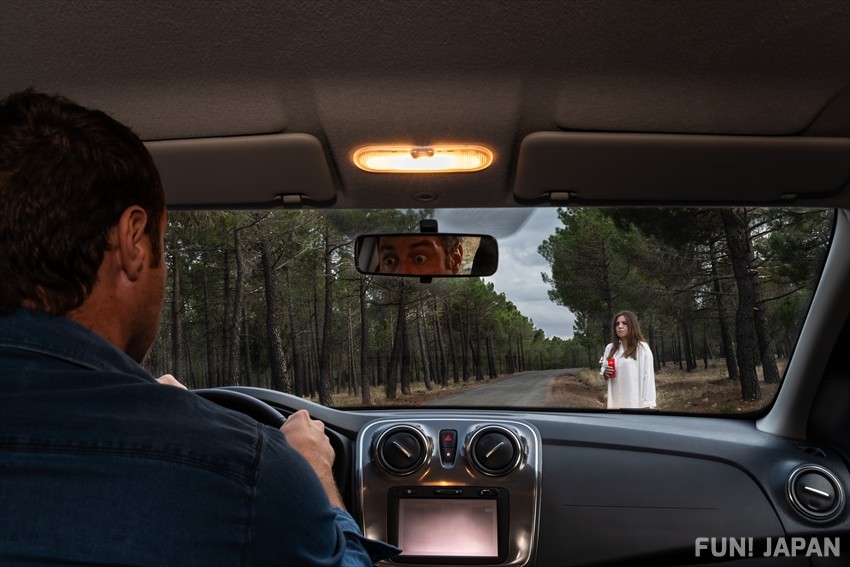
Japan is a country with many beliefs, such as Buddhism, Shinto, and ghosts. Even though youngsters these days do not have a clear belief; they visit Shinto shrines after birth, get married at a church, and have funerals at a temple. But when it comes to ghosts, many Japanese have experiences, even though those without would claim that they are not real…
Last time in this series, I talked about the “Ki” medical doctor sealing evil spirits, this time we will explore how Japanese people handle such situations.
Of course, when met with scary experiences, we will have to separate the cases too. If you experienced scary things outside and they do not follow you home, you won’t need to do anything special at home. If you met someone in a dream, then you must see if that is someone you know or something else. The point is each case has to be handled separately.
In this article, we will talk about finding ghosts outside accommodations such as hotels, dorms, apartments, and so on. Usually, those without special senses will not find ghosts, unless they go ghost-hunting or have a game of dare at haunted locations. Here, we included such cases as well as for those with sufficient senses that may be alerted of paranormal activities, or are simply walking past a location with a history of death or graveyards and seeing ghosts.
Pretend not to see
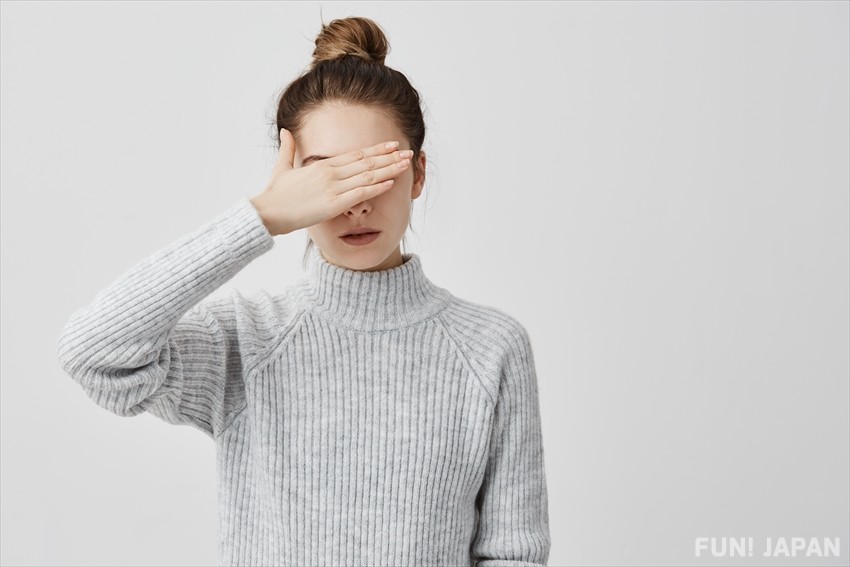
If Japanese people happen to see ghosts, the first thing most Japanese who never saw one before would do is to let the ghost know that they can see ghosts. As it happens, the ghosts or spirits will notice and follow that person around, to get the attention, help, or whatsoever else, and may even follow them all the way home. Especially since in Japan, there is no house-guardian, ghosts or spirits may come and go at will. So, the veterans of ghost-sighting often recommend that you should pretend that you did not see anything.
But this method can only be used if you know that whatever you see is a ghost from the first sight. In the case that the ghost looks exactly like a normal human, the best thing you can do is treat them like complete stranger; don’t look too much, don’t answer if they talk to you, maybe they are talking to someone else! If they can touch you or items or can talk to someone else, then you know that they are real people.
Also, even if you cannot see ghosts, you still should not talk to the ghosts or the dead anyway. There were cases in which someone says “what a pity” or “rest in peace” to the deceased, and the departed follow the person around without him noticing (but everyone else around saw the child with him), becoming scary tales to tell.
But if you felt familiar or believed that the spirits are of your relatives or close friends, maybe they want to tell you something or give a warning, so make sure to heed their words.
Make a hand-sign
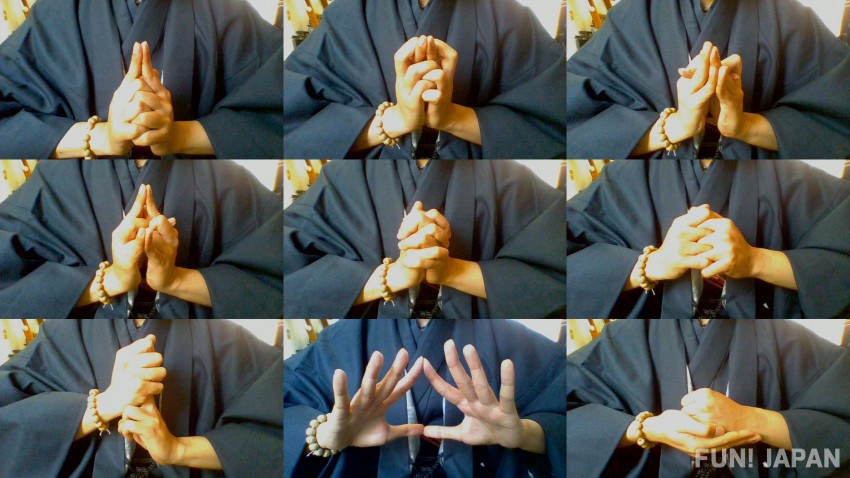
If you are an avid fan of NARUTO, it is the Shuin (手印). Shuin or hand-signs have existed in Japan long since the coming of Buddhism, the way of Onmyo, and Ninja.
For the easiest but most effective hand-sign, the Sign of Fudo Myo-o (不動明王). Simply put your fingers together in zigzag fashion with fingertips between your palms and leave the index fingers straight out. It is said to help protect against evil since Fudo Myo-o is believed to be the deity that guards Buddhism. By making this hand-sign, it is believed to plead for Fudo Myo-o’s power to help protect the practitioner.
Besides that, this hand-sign is one of the Kuji (九字 nine characters) often used for exorcism or guarding against evils. If you watched “Sailor Moon” anime before, you might remember Sailor Mars performing the chant with the same characters. The nine characters in the Kuji are:
Rin (臨
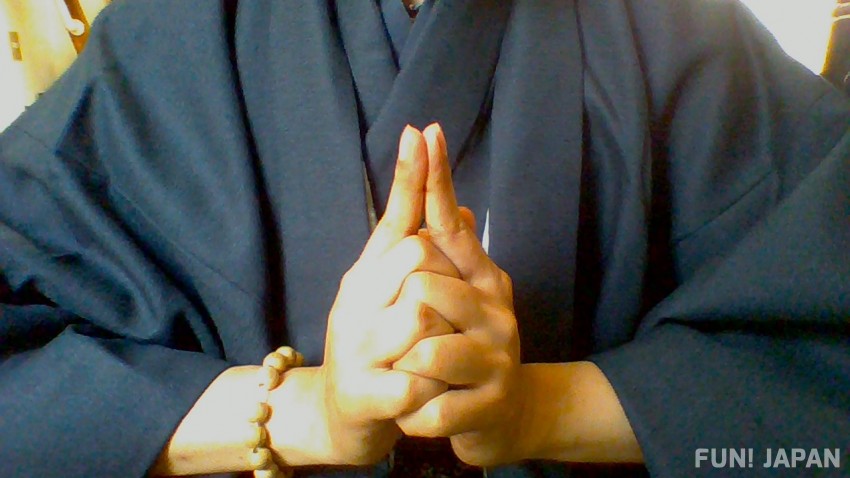
The same hand-sign as Fudo Myo-O’s.
Pyo (兵)
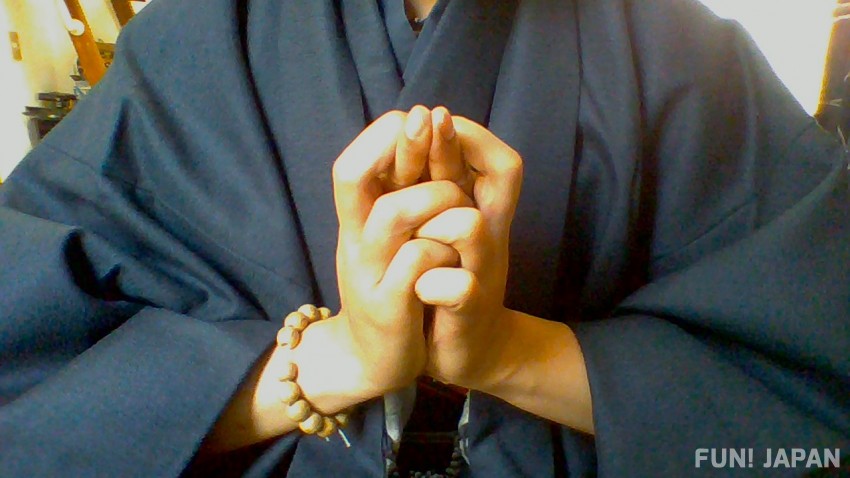
From Rin sign, cross your middle fingers against the index fingers of the same hand. Straighten up your thumbs to touch the tip of middle fingers.
To (闘)
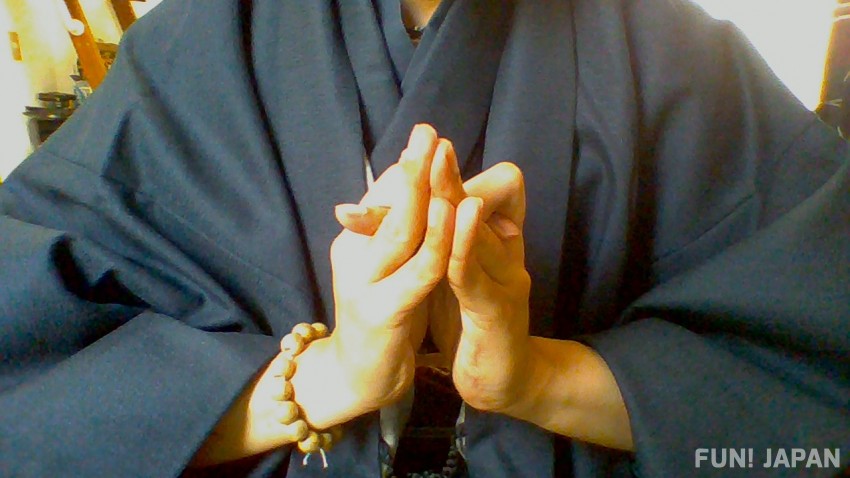
A little more complex. First, open your hands with palm down, put your right index finger over your left index finger, let the tip of the index fingers sit between the bases of middle fingers and ring fingers of the opposite hands (the tips of your index finger is under your middle finger but over your ring finger). Then, bend the middle fingers down to lock the index fingers in place. Put your palms together while putting the back side of the middle fingers together. Straighten your thumb, ring, and pinky fingers upward and put the tips of the corresponding fingers together.
Sha (者)
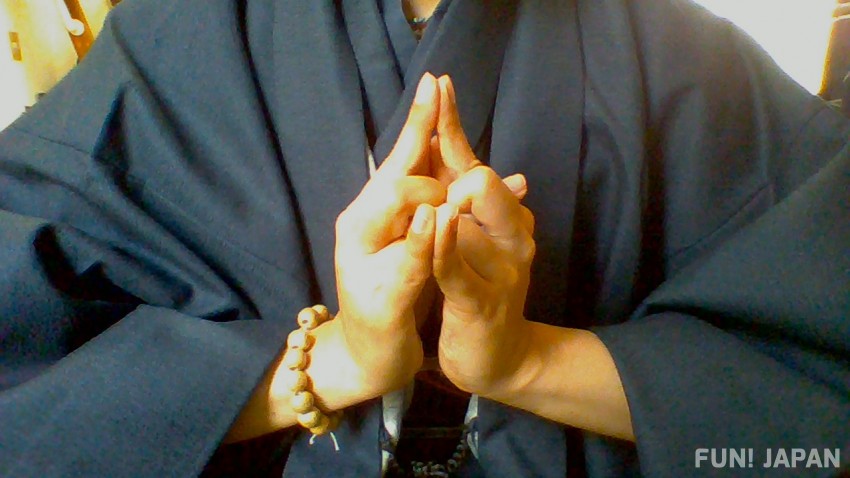
As complex as the previous. Start by putting your palm together like scooping up water. Then, put the right ring finger over the left ring finger while putting the tips between the bases of your index and middle fingers of the opposite hands (the tips are under your index but over your middle fingers). Bend the middle fingers down to lock the ring fingers of the opposite hands in place and use your thumb to secure the position by pressing the tips of your middle fingers of the same hand. Straighten the index and pinky fingers and put the corresponding fingertips together while putting the base of your palms together.
Kai (皆)
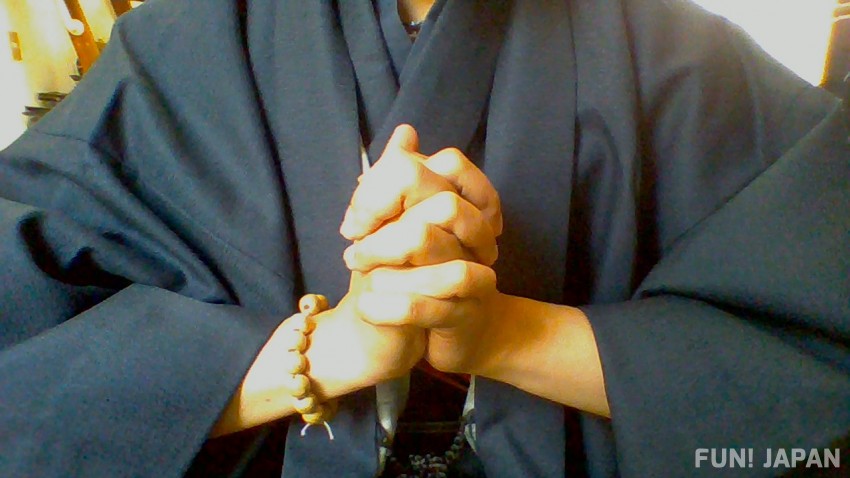
Put your fingers in a zigzag fashion and grip (like praying but with elbows lifted).
Jin (陣)
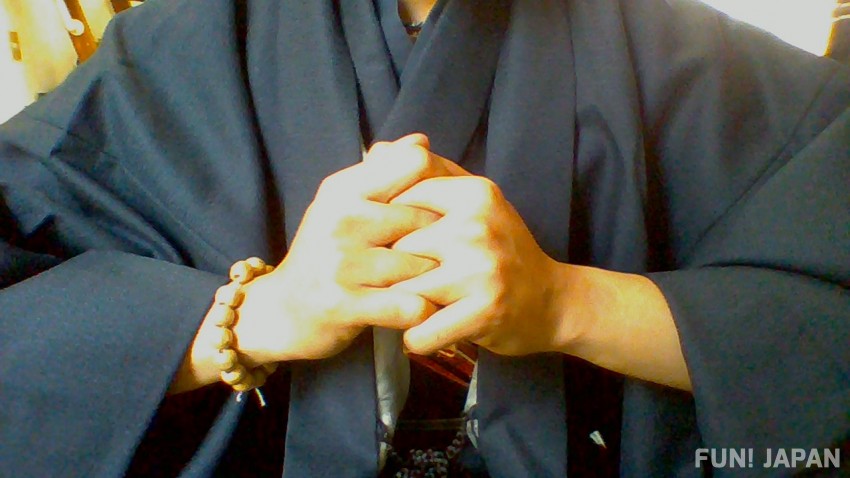
Loosen from the previous sign, put your fingertips downward between palms, then put the bases of the palm together.
Retsu (烈)
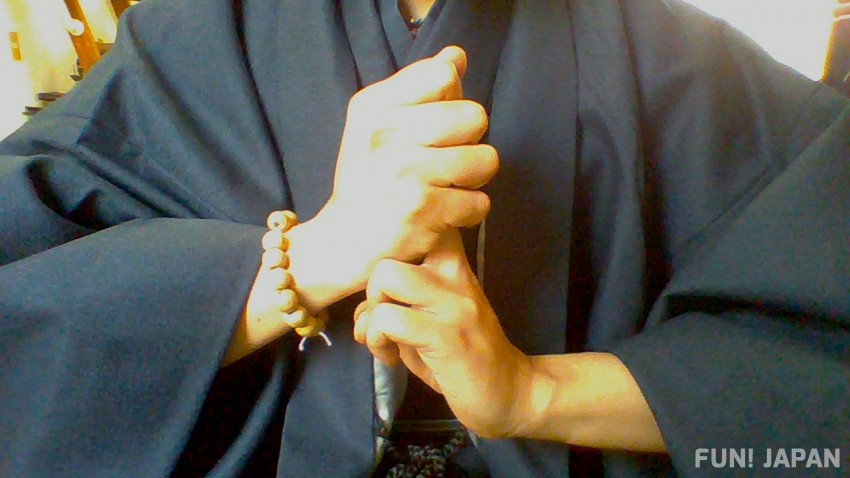
From normal fist, straighten up index and middle fingers of the left hand, then hold them with your right hand.
Zai (在)
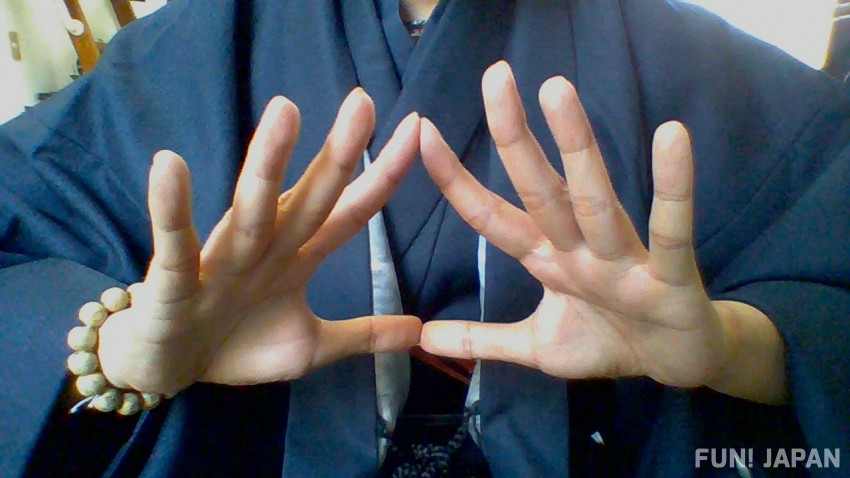
Open your hands with palm forward, put the tips of index fingers and thumbs together
Zen (前)
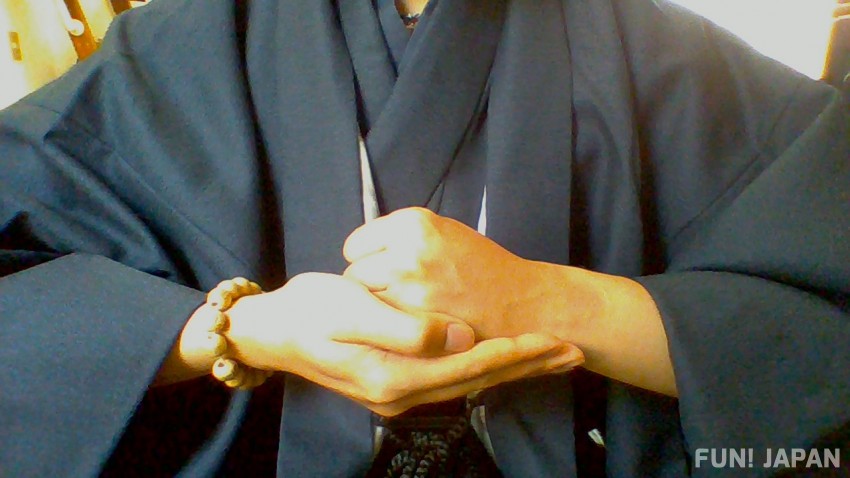
Make a fist with your left hand (with the backhand pointing forward) and put your right hand under.
These are kanji characters from the sentence “臨む兵、闘う者、皆 陣烈(裂)れて(きて)前に在り” which roughly translates into “Vanguard soldiers, persons who fight, everybody, come forth and make a standing row to the front!”. This is similar to a mantra for summoning a deity of war to protect oneself. Originally a Taoism mantra praising the celestial guardians who protect Buddhism. Believed to come along with Buddhism from China, but there was no written evidence until the Edo period. Even now, it is still used in purification rituals or exorcism, but often preferred as chanting over hand-sign. If you have time, you can try practicing these signs.
Patting on the back
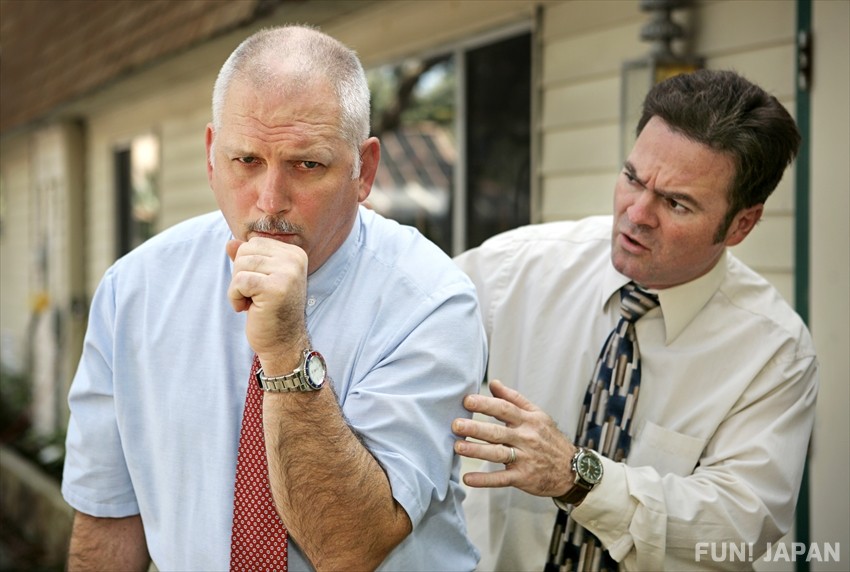
In the case that you cannot see ghosts or paranormal things, but feel a chill, feel like vomiting, coughing, or nauseating, in Japan, it is believed to be the influences from ghosts or spirits entering your body. Your own guardian spirit ((守護霊 / Shugorei) may try to get rid of the evil things in your body using such actions; to get whatever inside out through the mouth.
Also, it is believed that if someone with special senses (or even those without) pat your back for you, it will help drive away the ghosts. This is the simplest form of purification ritual when you're empty-handed. However, for those without special senses or those who don’t know how to protect oneself from evil spirits, patting someone else’s back can cause the ghost to follow you around instead. The one performing this should be someone with either strong luck or with strong guardian spirits. It is also recommended to do it before leaving the locations, or the ghosts will follow you out of there. If the person happens to know some mantra or sutra, let him chant and then pat, that would be best. Even the Kuji mentioned above might also work, just follow the chant with “Akuryo Taisan” (悪霊退散 Evil be gone!) then patting the back. (And don’t hit too hard, or what comes out might not be the ghost, but that very person’s spirit itself like some movie…)
Using salts
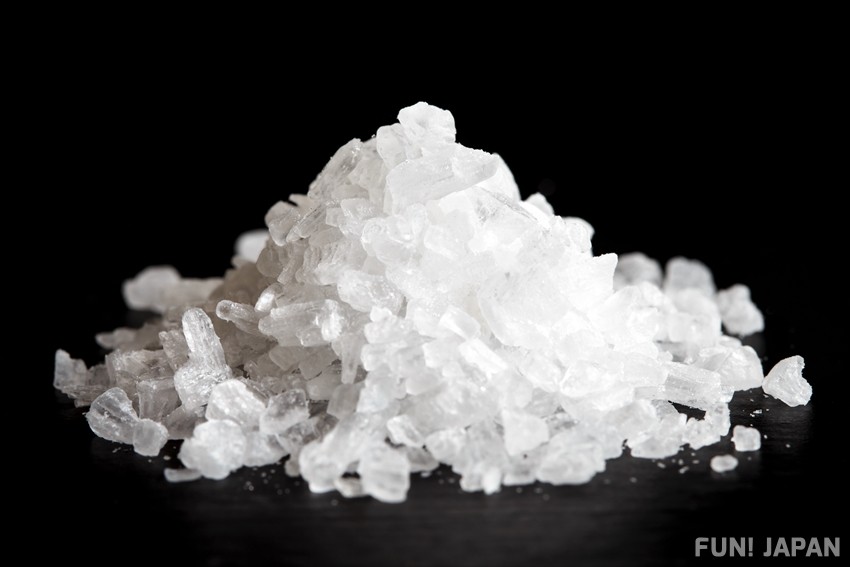
It has been a belief since ancient time based on Japanese mythology, on the part about Izanagi after his return from meeting his wife in Yomi no Kuni. He used sea water in the purification ritual to cleanse himself from Yomi no Kuni’s influences.
This is one of the methods a normal person can perform, though preparing the salts in advance is required. Besides, not any salts will do, they have to be 100% sea salts, as it is believed to have the purification power straight from the sea. The most popular salt is the coarse salt called Arajio (粗塩). The salts can also be divided further by the purpose or usage, such as:
- Mochishio (持ち塩 Carried Salt): salt carried around as a charm to ward off evils. It can be used to sprinkle on the spot that is supposedly haunted by ghosts, or for consumption to expel the ghosts out of the body. But be careful to eat only a small amount; just dip your fingertip in the salt and lick the fingertip.
- Morishio (盛り塩 Piled Salt): piled up salt on the dish for putting at the entrance or evil-gate (鬼門).
- Okiyomeshio (お清め塩 Purifying Salt): often handed out in funerals for purifications of the attendants, whether to get rid of bad things from along the way before attending or from the funeral before going home. It is also used to purify the new year’s decoration before throwing away.
In the case that you know you are going to some location known for being haunted or having ghosts, buying salts from convenience stores or putting some in ziplock bags and bringing them along might be a good idea. If you think you have met with a ghost, eat some or sprinkle some over your body on the part where you suspect the ghosts are clinging to can also help.
Visiting somewhere else
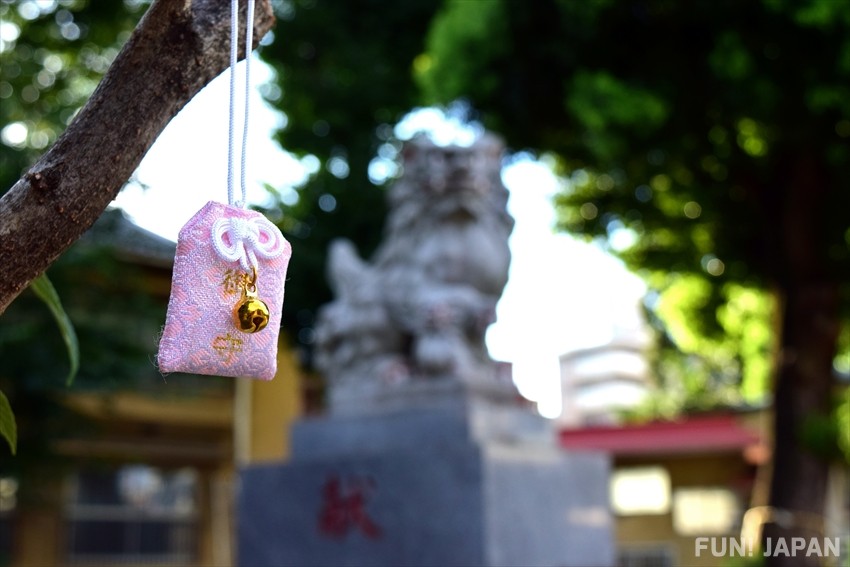
If the ghosts follow you around, going straight home will let the ghosts know of your address, and they may come haunting at any time. Japanese people are afraid that the ghost will follow them home, so they often go to a convenience store, net café, or sleep over at friend’s house (and get haunted together), or wait until the morning and go to a shrine or temple to get the purification ritual done.
If the shrines or temples have a proper barrier, ghosts may not be able to follow you any further. Try praying for the local deity to help getting rid of the haunting spirits (but leave your guardian spirit with you) and you can go home at ease. This can be done without waiting until morning, but when leaving the precinct, try to choose different exit or the ghosts might be waiting to stalk you again.
Also, getting some Omamori (charm) may help. In this case, the most effective Omamoris are:
- Substitute Charm (身代り御守 Migawari Omamori) : blessed to take the bad lucks in place of the owner.
- Evil-Warding Charm (厄除御守 Yakuyoke Omamori) : wards away bad things.
But, if you can wait until morning, try asking for a purification ritual, or known in Japanese as Oharai (お祓い). The price may vary depending on the facilities, ranging from 5,000 yen to 50,000 yen. The facilities that can perform this ritual are:
Temple (お寺 / Otera); ask the monk (お坊さん Obosan or 僧侶 Soryo)/
- Shrine (神社 Jinja): ask the shrine priest (神主 Kannushi)
- Spiritual Medium (霊媒師 Reibaishi): harder to find than temples or shrines, and may be swindlers sometimes, so not only getting tricked by ghosts but also people if you are in bad luck. But if you found a real medium, then you are in luck.
For next episode, we will delve into the methods for other cases.
Read previous articles >>> Horror & Mystery series
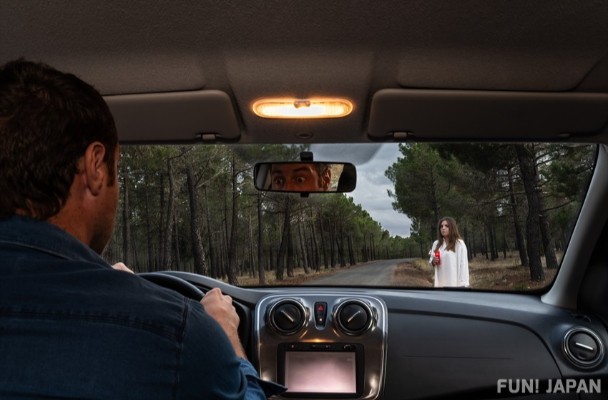
Comments